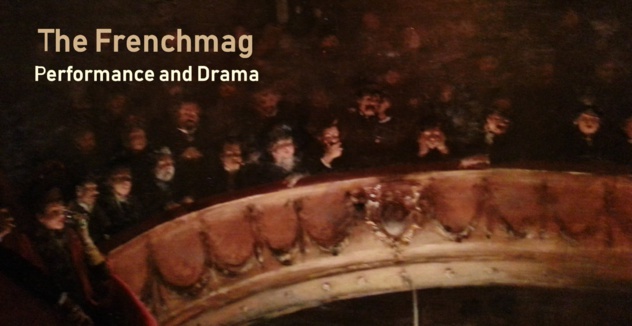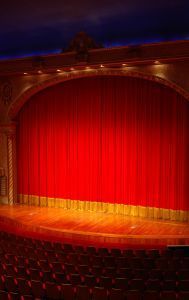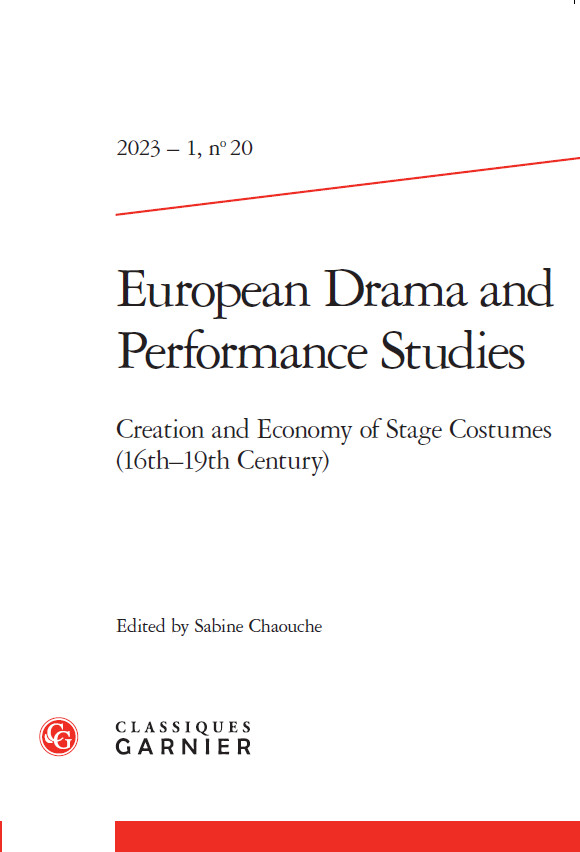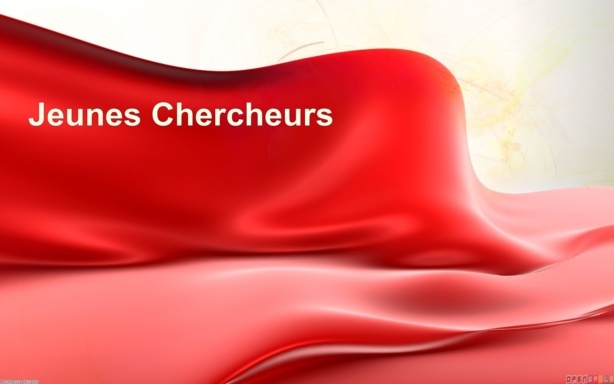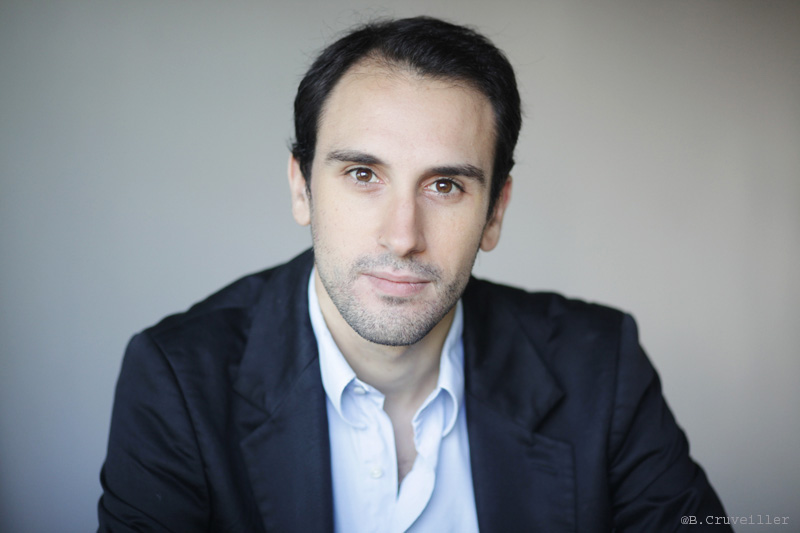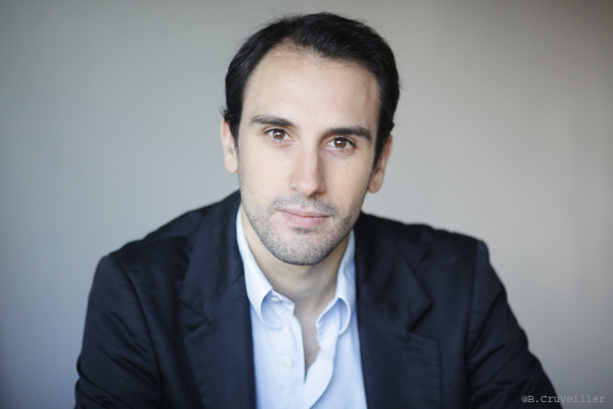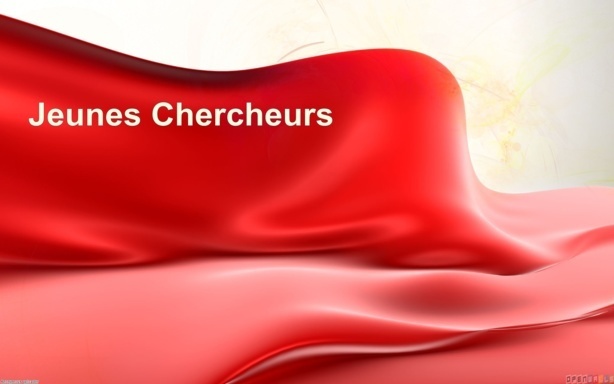
Biographie
Né en 1983. En parallèle de sa formation académique en Arts du spectacle à l’Université Paris III, il développe une activité professionnelle de comédien, metteur en scène et scénariste. S’intéressant plus particulièrement au théâtre français du XVIIe siècle, son expérience de la scène l’amène à interroger les œuvres dramatiques anciennes dans le contexte concret de leur production scénique. Après un Master consacré à la fonction des « petites pièces » comiques dans la programmation de la troupe de Molière, il approfondit dans son doctorat son questionnement sur l’importance de la farce dans l’univers théâtral parisien du XVIIe siècle et travaille sur les critères esthétiques et fonctionnels de cette forme théâtrale très peu étudiée. Récemment diplômé, il continue à explorer les pistes ouvertes par celui-ci en entamant un projet de recherche sur les formes théâtrales populaires en Europe et leur relation avec la culture de tradition orale. En outre, il désire mettre sur pied des projets transversaux entre pratique et théorique, comme des projets de créations scéniques intégrant les apports les plus récents de la recherche théâtrale de l’âge baroque, ou des interventions en tant que consultant historique sur des productions cinématographiques.
Born in 1983. In conjunction with his academic education in performing arts in Paris III University, he develops his professional activity as an actor, director and screenwriter. Especially interested in 17th century French theatre, his experience of stage acting and directing led him to question the ancient theatrical works in their actual production context. In his Masters’ thesis, he studied the function of “little plays” in Moliere’s troupe theatrical program. In order to pursue this matter, he completes a doctoral thesis on the impact of the genre of the farce in the 17th century Parisian cultural environment, studying in particular the esthetic and functional characteristics of this little-known dramatic form. Recently graduated, he continues exploring the avenues opened in his thesis with a research project on European popular theatre forms in relation with the oral tradition. In addition, he wishes to set up projects linking theory and practice, for example scenic creations reflecting the most recent findings of research on baroque era theatre, or involvement in historic researching for screen.
Born in 1983. In conjunction with his academic education in performing arts in Paris III University, he develops his professional activity as an actor, director and screenwriter. Especially interested in 17th century French theatre, his experience of stage acting and directing led him to question the ancient theatrical works in their actual production context. In his Masters’ thesis, he studied the function of “little plays” in Moliere’s troupe theatrical program. In order to pursue this matter, he completes a doctoral thesis on the impact of the genre of the farce in the 17th century Parisian cultural environment, studying in particular the esthetic and functional characteristics of this little-known dramatic form. Recently graduated, he continues exploring the avenues opened in his thesis with a research project on European popular theatre forms in relation with the oral tradition. In addition, he wishes to set up projects linking theory and practice, for example scenic creations reflecting the most recent findings of research on baroque era theatre, or involvement in historic researching for screen.
Thèse : THE FARCE CHARACTER AND ITS PERFOMER: PRACTICES OF THE PARISIAN PROFESSIONAL FARCE PLAYERS (1610-1686)
Cette thèse de doctorat a été soutenue le 28 mars 2014 à l’université Paris III (Centre Censier).
Elle a obtenu la mention « très honorable avec félicitations ».
Directeur : M. Gilles DECLERCQ- Professeur des Universités
Membres du jury :
Mme Martine de ROUGEMONT - Professeur des universités, Université Sorbonne Nouvelle - Paris 3
M. Claude BOURQUI - Professeur des Universités, Université de Fribourg (Suisse)
M. Gilles DECLERCQ- Professeur des Universités, Université Sorbonne Nouvelle - Paris 3
M. Jean de GUARDIA - Maître de conférence, Université Paris Est Créteil
M. Bernard FAIVRE - Professeur des Universités, Université Paris Ouest Nanterre La Défense
Résumé
Si le genre théâtral de la farce médiévale est un sujet exploré depuis longtemps par la recherche théâtrale, l’étude de sa postérité au XVIIème siècle en est encore à ses balbutiements. En particulier, il n’a pas encore été élaboré de système conceptuel global qui permette de rendre compte des spécificités de la « forme moderne » de ce genre marginal basé sur les traditions culturelles populaires, dont restent de nombreux témoignages polymédiatiques, attestations littéraires ou représentations visuelles. Ce travail se propose donc de fournir une codification structurelle du genre, appuyée sur une base documentaire cohérente, qui permette de rendre compte à la fois de ses spécificités de construction dramaturgique et des modalités concrètes de sa pratique. Dans ce but, il sera procédé à une analyse des éléments constitutifs de cette forme scénique à l’aide de l’outillage développé dans le champ de l’anthropologie des médias populaires afin d’aboutir à la mise en place d’une typologie articulée sur les rapports fonctionnels des personnages récurrents ou « Masques » créés par les farceurs, interprètes polyvalents spécialisés dans cette forme théâtrale. Ce découpage typologique en sept personnages-fonctions sera précisé par la constitution d’un inventaire détaillé des interprètes de « Masques » actifs sur la scène parisienne depuis l’organisation des groupements de farceurs au sein des troupes de théâtre de la capitale vers 1610, à la fin du genre sur les théâtres officiels durant les années 1680. Ce catalogage systématique des farceurs en lien avec leur fonctionnalité scénique permettra ensuite de reconstituer la chronologie de l’activité de ces praticiens au sein des différentes troupes de la capitale en resituant précisément leur production dans le contexte plus large de l’évolution de l’ensemble des pratiques théâtrales de l’époque, donnant ainsi l’occasion de mesurer précisément l’influence qu’exerce tout au long du siècle la farce sur les formes théâtrales régulières.
mots-clés : Farce, XVIIème siècle, Interprète, Personnage-type, Théâtre parisien, Culture populaire.
Summary:
Whereas the theatrical genre of medieval farce has been an area explored since a long time, the study of its successors in the 17th century is at its very beginning. In particular, a comprehensive conceptual system that could account for the specific features of the modern form of a marginal genre based on popular cultural traditions has yet to be developed, despite a great numbers of polymediatic records of this theatrical practice, in visual or written form. This work proposes a structural codification of the genre, based on a coherent and consistent documentary base, in order to account for the specifics in the construction of its dramaturgy as well as of the practicalities of its practice. To this end, we conduct a thorough analysis of the structural components of this theatrical form with the help of the methodological tools used in anthropological studies of popular media in order to establish a typology based on the functional relations of the stock characters (or “Masks”) created by the actors specialized in this particular theatrical genre. The typological division into seven character types will be exemplified through the creation of a detailed inventory of the performers in “Masks” on the Parisian stage, from the emergence of farces players in theatre troupes ca. 1610 to the end of this theatre form in the official theatres in the 1680s. This systematic approach linking the farce players to a specific dramaturgic functionality will allow reconstructing a chronology of this practice in the different Parisian troupes. This will give the opportunity to replace the activity of the farce performers in the global evolution of the theatrical practices during the century, in order to the show the influence of the farce on the contemporary regular theatre forms.
Keywords : Farce, 17th century, Performer, Stock Character, Parisian Theatre, Popular Culture.
Elle a obtenu la mention « très honorable avec félicitations ».
Directeur : M. Gilles DECLERCQ- Professeur des Universités
Membres du jury :
Mme Martine de ROUGEMONT - Professeur des universités, Université Sorbonne Nouvelle - Paris 3
M. Claude BOURQUI - Professeur des Universités, Université de Fribourg (Suisse)
M. Gilles DECLERCQ- Professeur des Universités, Université Sorbonne Nouvelle - Paris 3
M. Jean de GUARDIA - Maître de conférence, Université Paris Est Créteil
M. Bernard FAIVRE - Professeur des Universités, Université Paris Ouest Nanterre La Défense
Résumé
Si le genre théâtral de la farce médiévale est un sujet exploré depuis longtemps par la recherche théâtrale, l’étude de sa postérité au XVIIème siècle en est encore à ses balbutiements. En particulier, il n’a pas encore été élaboré de système conceptuel global qui permette de rendre compte des spécificités de la « forme moderne » de ce genre marginal basé sur les traditions culturelles populaires, dont restent de nombreux témoignages polymédiatiques, attestations littéraires ou représentations visuelles. Ce travail se propose donc de fournir une codification structurelle du genre, appuyée sur une base documentaire cohérente, qui permette de rendre compte à la fois de ses spécificités de construction dramaturgique et des modalités concrètes de sa pratique. Dans ce but, il sera procédé à une analyse des éléments constitutifs de cette forme scénique à l’aide de l’outillage développé dans le champ de l’anthropologie des médias populaires afin d’aboutir à la mise en place d’une typologie articulée sur les rapports fonctionnels des personnages récurrents ou « Masques » créés par les farceurs, interprètes polyvalents spécialisés dans cette forme théâtrale. Ce découpage typologique en sept personnages-fonctions sera précisé par la constitution d’un inventaire détaillé des interprètes de « Masques » actifs sur la scène parisienne depuis l’organisation des groupements de farceurs au sein des troupes de théâtre de la capitale vers 1610, à la fin du genre sur les théâtres officiels durant les années 1680. Ce catalogage systématique des farceurs en lien avec leur fonctionnalité scénique permettra ensuite de reconstituer la chronologie de l’activité de ces praticiens au sein des différentes troupes de la capitale en resituant précisément leur production dans le contexte plus large de l’évolution de l’ensemble des pratiques théâtrales de l’époque, donnant ainsi l’occasion de mesurer précisément l’influence qu’exerce tout au long du siècle la farce sur les formes théâtrales régulières.
mots-clés : Farce, XVIIème siècle, Interprète, Personnage-type, Théâtre parisien, Culture populaire.
Summary:
Whereas the theatrical genre of medieval farce has been an area explored since a long time, the study of its successors in the 17th century is at its very beginning. In particular, a comprehensive conceptual system that could account for the specific features of the modern form of a marginal genre based on popular cultural traditions has yet to be developed, despite a great numbers of polymediatic records of this theatrical practice, in visual or written form. This work proposes a structural codification of the genre, based on a coherent and consistent documentary base, in order to account for the specifics in the construction of its dramaturgy as well as of the practicalities of its practice. To this end, we conduct a thorough analysis of the structural components of this theatrical form with the help of the methodological tools used in anthropological studies of popular media in order to establish a typology based on the functional relations of the stock characters (or “Masks”) created by the actors specialized in this particular theatrical genre. The typological division into seven character types will be exemplified through the creation of a detailed inventory of the performers in “Masks” on the Parisian stage, from the emergence of farces players in theatre troupes ca. 1610 to the end of this theatre form in the official theatres in the 1680s. This systematic approach linking the farce players to a specific dramaturgic functionality will allow reconstructing a chronology of this practice in the different Parisian troupes. This will give the opportunity to replace the activity of the farce performers in the global evolution of the theatrical practices during the century, in order to the show the influence of the farce on the contemporary regular theatre forms.
Keywords : Farce, 17th century, Performer, Stock Character, Parisian Theatre, Popular Culture.
